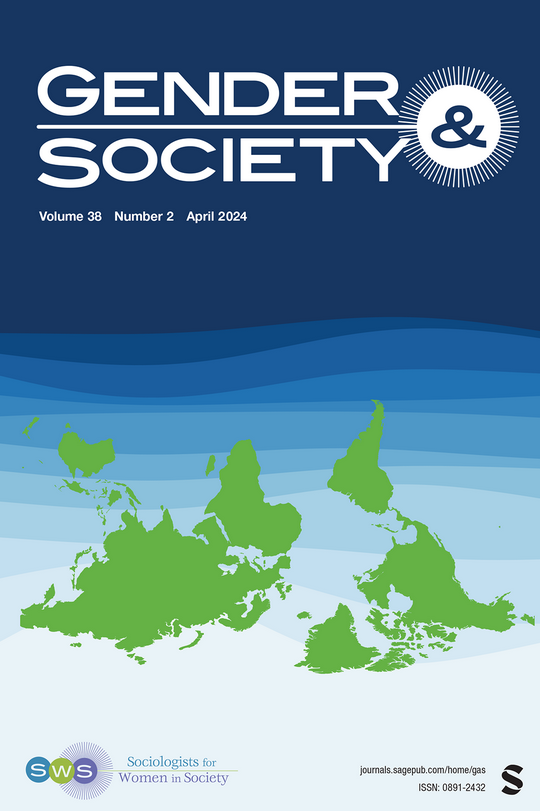性别类型技能共现与职业性别隔离:以2011-2015年美国专业职业为例
IF 7.2
1区 社会学
Q1 SOCIOLOGY
引用次数: 0
摘要
职业性别隔离的研究依赖于社会文化模型来解释为什么一些职业在数量上由女性主导,而另一些职业由男性主导。该模型认为,职业性别隔离是由适合性别的工作规范驱动的,这些规范通常被概念化为性别类型的技能:与工作相关的任务、能力和知识领域,社会将其视为女性或男性。因此,社会文化模式解释了职业性别隔离的主要模式,这些模式符合这些规范:对女性(男性)技能的要求随着女性在职业中的代表性而增加。然而,该模型并没有充分解释偏离这些规范的隔离案例,也没有调查女性和男性技能在职业中共存的方式。本研究通过评估两种先前未经测试的偏离社会文化模式的解释来填补这些空白。研究结果表明,对体力(一种男性技能)的要求随着女性在专业职业中的代表性而增加,因为体力技能与对女性技能(包括帮助和照顾他人)的更高要求同时存在。这些结果表明,社会文化模式,以及对性别规范如何驱动职业性别隔离的更普遍解释,可以通过检查性别类型技能共现的模式来改进。本文章由计算机程序翻译,如有差异,请以英文原文为准。
Gender-Typed Skill Co-Occurrence and Occupational Sex Segregation: The Case of Professional Occupations in the United States, 2011–2015
Studies of occupational sex segregation rely on the sociocultural model to explain why some occupations are numerically dominated by women and others by men. This model argues that occupational sex segregation is driven by norms about gender-appropriate work, which are frequently conceptualized as gender-typed skills: work-related tasks, abilities, and knowledge domains that society views as either feminine or masculine. The sociocultural model thus explains the primary patterns of occupational sex segregation, which conform to these norms: Requirements for feminine (masculine) skills increase with women’s (men’s) representation in the occupation. However, the model does not adequately explain cases of segregation that deviate from these norms or investigate the ways in which feminine and masculine skills co-occur in occupations. The present study fills these gaps by evaluating two previously untested explanations for deviations from the sociocultural model. The findings show that requirements for physical strength (a masculine skill) increase with women’s representation in professional occupations because physical strength skills co-occur with substantially higher requirements for feminine skills that involve helping and caring for others. These results indicate that the sociocultural model, and more generally explanations for how gender norms drive occupational sex segregation, can be improved by examining patterns of gender-typed skill co-occurrence.
求助全文
通过发布文献求助,成功后即可免费获取论文全文。
去求助
来源期刊

Gender & Society
Multiple-
CiteScore
9.70
自引率
3.60%
发文量
78
期刊介绍:
Gender & Society promotes feminist scholarship and the social scientific study of gender. Gender & Society publishes theoretically engaged and methodologically rigorous articles that make original contributions to gender theory. The journal takes a multidisciplinary, intersectional, and global approach to gender analyses.
 求助内容:
求助内容: 应助结果提醒方式:
应助结果提醒方式:


